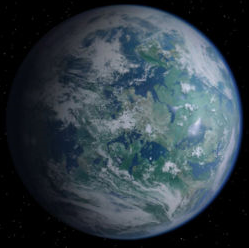Space.com had an interesting article recently on Ceres, asking if we would be able to
colonize the planet as is done in the SyFy television series
The Expanse. Its an interesting question, just as
The Expanse has been a fascinating take on humans expanding into the solar system, including occupying Mars and the asteroid belt.
Here is how the dwarf planet is described in the future on the Syfy website:
The largest object in the asteroid belt between Mars and Jupiter, the
dwarf planet Ceres has become the port city of the Belt. A subterranean
city has been bored into the rocky interior of the planetoid, which is
home to some 6 million people. Thanks to the spin created by Tycho
engineers, the residents of Ceres experience artificial gravity in the
form of centrifugal force, which presses away from the core of the
planetoid, and out towards the exterior of the station. An endless
stream of trade flows through its docks, but the majority of the wealth
flows back to Earth and Mars. The closer you travel to Ceres' Core, the
more impoverished the living conditions.
It would be nice to have one person on Ceres, never mind 6 million.
The Space.com article discussed the difficulties of living on the surface with only 1/40th the Earth's gravity, noting:
The moon has lava tubes,
and some people have talked about repurposing these structures into
habitats. An alternate idea for Ceres — a place bereft of the silicate
lavas needed to create such tubes — would be to use inflatable habitats
(similar to those in development by Bigelow Aerospace) and then bulldoze rocky material over the habitat to serve as a radiation shield.
Living off the land on Ceres may be more difficult than doing so at the
moon, but it's hard to say yet as the dwarf planet is just this year
getting its first close-up. Still, any water ice on Ceres seems (so far)
to be buried in the dwarf planet's interior, despite the discovery of a
definitive signature of water ice in Ceres' atmosphere. The water ice
on Earth's moon may be a little closer to the surface, at least at the
poles.
It is interesting that we are now discussing "any water" on Ceres when back in 2005
Space.com was noting that scientists believed Ceres had
more fresh water than the Earth. The
Dawn spacecraft page at NASA still notes the large quantities of water on Ceres, even though the Dawn mission results have been somewhat tentative. The European Space Agency's
Herschel space observatory detected water vapor on and around the dwarf planet, so the water is there, but the quantity still seems to be a guess.
It is very intriguing to speculate on future mission to Ceres and the asteroid belt. The existence of water, as well as other resources, is the key reason the colonists in
The Expanse are in the belt - to supply the needs of humans living on Mars and elsewhere. Let's just hope the future colonists are a little happier than those in the SyFy series.





















